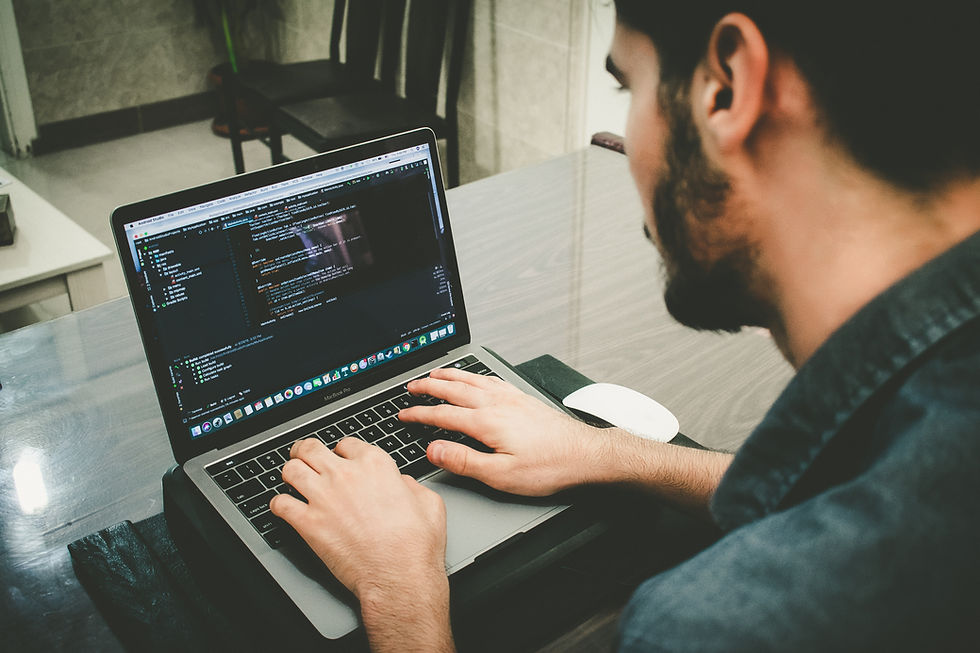Chief Information Security Officer (CISO)
- Neil Faraday

- Mar 18, 2021
- 3 min read
Updated: Sep 2, 2023
CISO or the Chief Information Security Officer is the head/executive in an organization who is exclusively responsible for the security of the information and data in the organization. Although a CISO’s position has been loosely defined in the past, the title is interchangeably used today as CSO and VP Security, which further reveals a better role for the organization.

It is anticipated that ambitious security professionals who are eager to climb the ladder can take up CISO positions.

CISO is a prime position in the IT Office. They hunt the bad guys and ensure there are no irregularities in the IT ecosystem. The path to becoming a CISO is a journey that allows us to explore the ventures for becoming a CISO as well as the roles and responsibilities which it will include.
For Digital Enterprises that are looking to establish one office with IT as the core of strategy and business model innovation, it is imperative to be well-acquainted with the position if you’re considering adding a CISO into your company.
Responsibilities of a CISO
Work is important for the task of establishing a foothold, but factual work usually fails. Organizations must ensure that their workers — particularly the CISOs —are performing the tasks they're contracted to try to. If not, they are in danger of disrupting sensitive processes and leaking data.
The CISO's top five goals
CISOs ponder the escalating cybersecurity threats; this ensures that everything, from the threats of ransomware and hacking to insider risks and unregulated weaknesses in organizational structures is taken into consideration. In the event of data infringement, the CISO can play a key role in any incident response.
1. Enterprise Security Programs Creation
The most straightforward part of the CISO's job is to keep the organization protected against cyberattacks, but it is always sidelined because it's not the only feature of the task. If the security manager is briefly diverted, severe consequences may occur.
The chief and the most essential tasks of a CISO are to address and secure the digital assets of the company/organization. Cybersecurity isn't a meek task for a whole company, but beyond the other aspects within the CISO’s description, it’s mandatory to secure the digital gates.
2. Identifying, controlling, and monitoring Incidents
CISO's work is so critical because cyberattacks are definitive. It is not just a vacuous threat; it is inevitable. Therefore, it is the responsibility of a CISO to take necessary actions against them. Their first task is to assess if a shot is created. This means that proper tools and services are required to spot and reveal the threats within the business. After identifying the difficulty, the reporting level is determined by the threat level or the result of the attack.
Regular intrusions, which are prevented before the harm is finished, are logged and reported to the protection community to avoid further attacks. The control chain then reports the threats leading to violations or data theft with guidance on the seriousness and remediation measures. Any public announcement will rely upon the particulars, and as a result, the company of the incident will explain how and to whom the varied invasive levels are identified.
3. Control and protection staff
The expertise in cybersecurity is the most significant within the IT job market, and soon, the shortage of eligible candidates will not alter. To develop an in-depth strategy to draw in, train, and retain the professionals with the relevant skills and interests, they have to embrace a cybersecurity career.
The first thing is to recruit the staff. The experience of today is a start line for shielding the organization from the threats of tomorrow. The protection threat environment changes significantly and employees must be trained on an everyday basis to assist the CISO in providing adequate protection for the corporate.
4. Monitoring and mitigation risks
An endless and expanding number of cyber threats can easily originate especially when workers start with their working days. Other companies come from rivals trying to profit or threaten their businesses, or from cybercriminals' networks in remote countries.
CISOs must be included within the global cybersecurity community to track and explore these channels. Sharing expertise with other security experts eases the burden on each CISO – and may warn against current and future threats.
5. Constant Communication
In their networks, individual workstations, and endpoints, the CISOs need robust cybersecurity measures because even the simplest software cannot defend against users' actions. If a user opens an inaccurate e-mail or visits a malicious URL, his absolute click can make intrusion and business network infection easier.
The role of CISO is to talk to all or any workers about the cybercriminals' techniques they're using to induce access to and the way their activities can cause data violations. The messages should be interesting, and not intimidating or repetitive. Become a thinker to ensure business security to a certain extent. Show your workers that you simply want to shield the corporate, and not discourage the legitimate use.



Comments